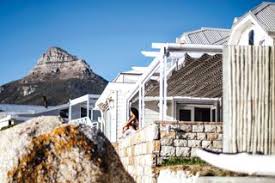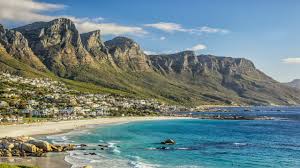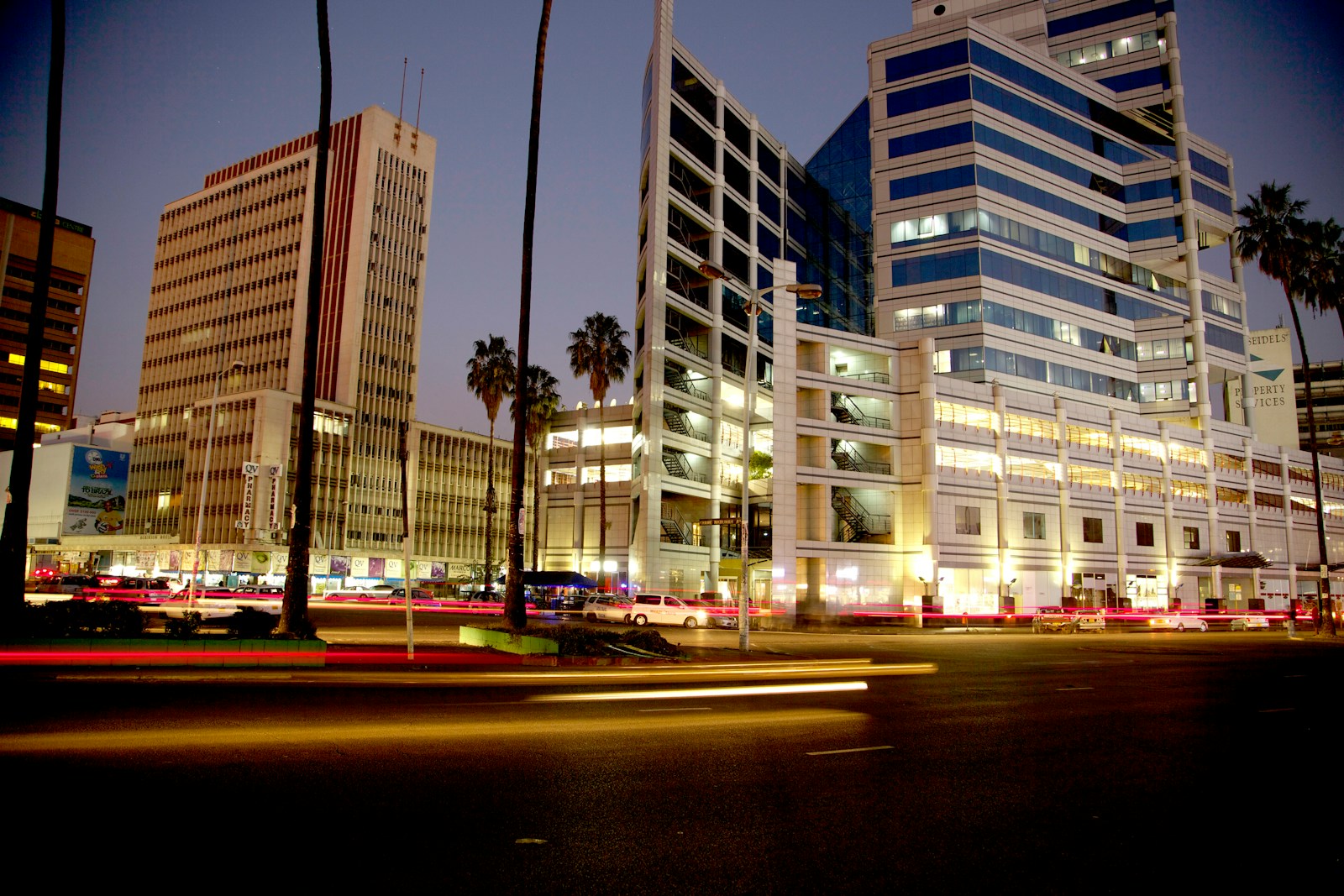
Introduction:
South Africa boasts some of the most stunning coastlines globally, attracting the affluent seeking privacy, tranquility, and elegance. From the renowned city of Cape Town to the quiet coastal towns like Plettenberg Bay, the country’s real estate market offers a wide array of exclusive properties with breathtaking views of the ocean. The coastal properties on this list are not just homes; they represent a unique lifestyle — one of luxury, comfort, and access to both nature and world-class amenities.
This paper seeks to explore the allure of South Africa’s top 10 exclusive coastal properties, examining their architectural significance, geographical location, the demand for real estate in these areas, and their economic impact.
FOR MORE: https://africatrademonitor.com/
1. The Appeal of South Africa’s Coastal Properties:
1.1 Geographical Diversity:
South Africa’s coastlines are vast, stretching from the Atlantic Ocean in the west to the Indian Ocean in the east. The country offers a wide range of coastal environments, from rugged cliffs and sandy beaches to lush forests and marine reserves. These diverse landscapes provide the perfect backdrop for some of the world’s most luxurious homes.
1.2 Investment Potential:
The exclusivity and demand for coastal properties in South Africa have led to an increasing interest from international investors. Not only do these properties serve as private retreats, but they also represent lucrative real estate investments. The combination of natural beauty, stability of the South African property market, and robust tourism industry makes these coastal regions ideal for long-term investment.
2. Top 10 Coastal Properties in South Africa:
2.1 Clifton, Cape Town:
Clifton is a prestigious neighborhood, home to some of South Africa’s most expensive and sought-after properties. The location is unmatched with spectacular views of the Atlantic Ocean and the Twelve Apostles Mountain Range. Properties here are prized for their private beaches, large living spaces, and close proximity to the vibrant city of Cape Town.
2.2 Camps Bay, Cape Town:
Just minutes from Clifton, Camps Bay offers a luxurious, laid-back lifestyle with beachfront living and world-class amenities. The properties here are designed with modern architecture, large glass windows, and expansive terraces, providing residents with panoramic views of the ocean.
2.3 Bantry Bay, Cape Town:
Bantry Bay is one of the most exclusive suburbs in Cape Town. With properties perched on the cliffs, it offers the most stunning views of the Atlantic. The neighborhood is quieter, ideal for those seeking privacy, and is known for its luxury villas and contemporary architectural style.
2.4 Plettenberg Bay, Western Cape:
Plettenberg Bay is one of the most desirable coastal destinations on the southern coast. Known for its natural beauty, pristine beaches, and exclusive golf estates, Plettenberg Bay offers a unique lifestyle for those who prefer a slower pace with access to high-end amenities. The area also attracts celebrities and high-net-worth individuals.
2.5 The Garden Route, Western Cape:
Stretching from Mossel Bay to Storms River, the Garden Route offers a collection of world-class coastal properties that benefit from both proximity to nature reserves and luxurious living standards. The area is famous for its serene environment, biodiversity, and excellent climate, making it a hotspot for luxury buyers.
2.6 Simbithi Eco Estate, KwaZulu-Natal:
Located on the north coast of KwaZulu-Natal, Simbithi Eco Estate combines sustainable living with luxury. The estate is surrounded by indigenous forest and offers residents spectacular views of the Indian Ocean, creating a unique blend of natural beauty and architectural sophistication.
2.7 Zinkwazi Beach, KwaZulu-Natal:
Zinkwazi Beach is one of the most exclusive beach destinations on the northern KwaZulu-Natal coast. The properties here are often expansive, offering both privacy and proximity to the beach. It’s a perfect spot for those looking for a peaceful escape while enjoying the luxury of the oceanfront.
2.8 Llandudno, Cape Town:
Llandudno is one of the most scenic and exclusive coastal communities in South Africa. It is renowned for its privacy, surrounded by mountains and the Atlantic Ocean. The properties here are designed to blend in with the environment, with many homes offering direct access to the beach.
2.9 Hermanus, Western Cape:
Hermanus is known as one of the best whale-watching locations in the world, and the coastal properties here reflect the natural beauty of the area. This town offers both luxury oceanfront homes and eco-friendly retreats, with several gated communities designed to offer exclusive, high-end living.
2.10 Durban Beachfront, KwaZulu-Natal:
Durban’s beachfront properties offer an excellent opportunity for high-end living. With a combination of modern luxury apartments and private villas, this area provides easy access to pristine beaches, fine dining, and a vibrant cultural scene, making it an attractive location for wealthy individuals.
3. Architectural Significance of Coastal Properties:
The architectural significance of South Africa’s coastal properties is a testament to the country’s rich cultural heritage, innovation in design, and deep respect for nature. These properties are not merely buildings; they represent a lifestyle, a connection with the environment, and an aspiration to achieve the highest standards of luxury and sustainability. As South Africa’s coastline offers some of the most stunning and diverse natural landscapes in the world, architects and property developers have focused on blending the natural beauty of the surroundings with cutting-edge, sustainable designs that enhance the coastal experience.
3.1 The Influence of Natural Surroundings on Design Choices
Coastal properties in South Africa are intrinsically linked to the environment they occupy. The sheer diversity of landscapes, from the rocky cliffs and sandy beaches of the Western Cape to the tropical beauty of KwaZulu-Natal’s Indian Ocean shores, has influenced architectural trends in coastal developments. South African architects understand that coastal properties must adapt to their surroundings, both in terms of the physical landscape and the regional climate.
For example, in areas like Camps Bay and Clifton, the emphasis is on making the most of the stunning ocean views, with designs that maximize natural light and provide unobstructed vistas of the Atlantic Ocean. The architecture here typically features large glass windows and open terraces that allow residents to immerse themselves in the beauty of the ocean while also protecting the home from the elements. The angular, modern lines of the buildings reflect the surrounding cliffs and coastal terrain, providing both a visual and physical integration with nature.
In contrast, properties on the Eastern Cape, such as those in Plettenberg Bay and Hermanus, often blend with the more rugged, forested landscapes of the region. These properties tend to incorporate natural stone, wooden cladding, and earthy tones that reflect the lush environment and the surrounding wildlife. Homes are often designed to appear as though they are emerging naturally from the landscape, reinforcing the idea that they are part of the environment rather than simply placed within it.
3.2 Sustainability in Coastal Architecture
One of the most defining aspects of the architecture of South Africa’s coastal properties is the emphasis on sustainability. As the global conversation surrounding climate change and environmental preservation intensifies, luxury properties in coastal regions are increasingly designed with eco-conscious principles in mind. South Africa’s coastal regions, in particular, are vulnerable to the impacts of climate change, including rising sea levels and extreme weather patterns. As such, sustainable architecture has become a key focal point for many high-end developers in the country.
Sustainable architecture focuses on minimizing a building’s environmental footprint and promoting energy efficiency. For instance, many coastal homes incorporate solar panels, rainwater harvesting systems, and green roofs to reduce their dependency on municipal resources. The use of eco-friendly materials, such as bamboo, recycled steel, and locally sourced stone, is also a common feature. These materials not only reduce the carbon footprint of construction but also ensure that the properties blend harmoniously with the natural surroundings.
In regions like Simbithi Eco Estate in KwaZulu-Natal, developers have taken the initiative to create green buildings that prioritize environmental preservation. These homes are often built in harmony with their natural surroundings, utilizing the principles of biophilic design — a design philosophy that seeks to connect people with nature. This approach leads to homes that feature open-plan living areas with panoramic views of the ocean, as well as outdoor spaces that blur the lines between the interior and exterior of the home.
Sustainable features also extend to the management of energy and water resources. Coastal homes are often equipped with rainwater collection tanks to ensure that the property’s water needs are met without putting undue strain on local resources. Energy-efficient lighting, smart thermostats, and motion-sensor systems help reduce electricity consumption, ensuring that luxury living does not come at the expense of environmental responsibility.
3.3 Blurring the Boundaries Between Indoor and Outdoor Living
South African coastal properties are renowned for their seamless transitions between indoor and outdoor spaces, a design feature that takes full advantage of the temperate coastal climate and breathtaking views. This is particularly evident in the Western Cape, where the combination of Mediterranean weather, long summers, and stunning vistas invites residents to live both inside and outside their homes.
Architectural designs often emphasize open-plan layouts, creating fluidity between the interior living spaces and expansive outdoor decks, gardens, and infinity pools. Large sliding glass doors or floor-to-ceiling windows are common, offering unobstructed views of the ocean or surrounding landscapes. These features not only bring natural light into the home but also promote a lifestyle that is closely connected with the outdoors.
On the Cape Peninsula, where properties are often situated on the edges of cliffs or beaches, architects use design strategies to create spaces that allow residents to enjoy the ocean breeze, sunlight, and spectacular views. The creation of expansive decks, patios, and terraces provides a sense of openness, with many homes offering direct access to the beach or private gardens. In regions like Llandudno, properties are designed with multi-level terraces and swimming pools that overlook the ocean, providing residents with a private sanctuary that connects them to the natural beauty of the coastline.
Furthermore, the integration of indoor-outdoor living spaces is extended to the landscaping design, where gardens are landscaped to flow naturally into the surrounding environment. Features like native plant species, wildlife corridors, and outdoor kitchens have become increasingly common, providing spaces for relaxation, entertainment, and a true sense of escapism.
3.4 Innovative Architectural Styles
While many coastal properties in South Africa are rooted in modern design, the architectural styles are as varied as the regions themselves. In Clifton, for instance, the buildings tend to have a minimalist aesthetic, with clean lines and sleek finishes that reflect the contemporary lifestyle of this affluent neighborhood. The design philosophy here is about creating a feeling of openness, with large expanses of glass and open spaces allowing the architecture to fade into the background while the view takes center stage.
In Bantry Bay, which is known for its exclusivity, the architectural style often features a luxury coastal Mediterranean influence. Homes in this area embrace whitewashed facades, large terraces, and lush courtyards, creating a warm, inviting atmosphere that draws on the region’s sun-drenched Mediterranean climate. Architectural features such as arched doorways, terracotta-tiled roofs, and mosaic flooring evoke the Mediterranean’s coastal charm while blending with South Africa’s unique coastal setting.
In KwaZulu-Natal, properties like those found in Simbithi Eco Estate reflect a contemporary eco-friendly style that blends natural materials like stone, wood, and glass with innovative technologies. The estate’s emphasis on sustainability extends beyond the materials used in construction and into the aesthetic choices, where architects aim to create homes that complement the surrounding environment while minimizing their impact.
3.5 Protection Against Coastal Elements
Living by the coast presents a unique set of challenges due to the coastal elements — strong winds, saltwater exposure, and high humidity — that can accelerate wear and tear on a building. Architects of South African coastal properties have adapted by incorporating materials that are resistant to corrosion, such as stainless steel, aluminum, and concrete.
In addition, the roofs of coastal homes often feature wind-resistant designs with sloped surfaces to prevent wind damage. Double-glazed windows are used to protect the interior from both the elements and the intense heat of the sun, while also reducing noise from the external environment. The integration of storm-resistant shutters and seawater-resistant paints ensures that these homes maintain their structural integrity and aesthetic appeal for decades.
3.6 The Future of Coastal Architecture in South Africa
As the demand for coastal properties continues to grow, so too will the sophistication of their design and construction. Future architectural trends will likely focus on even more advanced sustainable technologies, including smart homes with integrated systems that optimize energy consumption, water usage, and climate control. Solar-powered desalination plants for fresh water and smart grids that manage electricity demand are poised to become standard features in luxury coastal homes.
Moreover, architects will continue to incorporate designs that promote resilience against the increasing challenges of climate change, particularly rising sea levels and extreme weather events. South Africa’s coastal properties will likely become even more innovative in balancing luxury with environmental stewardship, creating spaces where modern living and nature coexist in harmony.
The architectural significance of South Africa’s coastal properties lies not just in their aesthetic appeal, but also in their adaptability, sustainability, and ability to foster a deep connection with the natural world. From the use of eco-friendly materials to the innovative integration of indoor and outdoor spaces, coastal architecture in South Africa offers a glimpse into the future of luxury living—one that places equal emphasis on comfort, design, and the preservation of the environment. size=2 width=”100%” align=center>
4. Socio-Economic Impact of Coastal Properties:
South Africa’s coastal properties are more than just luxurious residences; they have a profound impact on the socio-economic landscape of the country. From contributing significantly to the national economy to providing substantial job opportunities, these high-end homes represent both a symbol of wealth and a catalyst for economic growth. Through their influence on the tourism sector, the creation of employment, and their broader economic implications, coastal properties play an integral role in shaping the socio-economic fabric of the regions in which they are located.
4.1 Tourism and Economic Growth:
One of the most significant socio-economic contributions of South Africa’s coastal properties lies in the realm of tourism and hospitality. Coastal areas, particularly those in the Western Cape, KwaZulu-Natal, and the Eastern Cape, attract millions of visitors every year, many of whom seek out luxury experiences in exclusive, private properties. The demand for high-end tourism, which includes stays at luxury villas, private beach resorts, and exclusive rental homes, significantly boosts the local hospitality industry, which is a critical pillar of the South African economy.
4.1.1 High-End Tourism: A Lucrative Sector
The South African tourism sector has long been a vital contributor to the national GDP, and coastal properties represent one of the most lucrative segments within this industry. The growing appeal of South Africa as a luxury tourism destination is driven largely by its exclusive coastal locations. Cities like Cape Town are regularly ranked among the world’s top destinations for luxury tourism. The city, with its diverse range of premium real estate, offers everything from ultra-modern beachfront penthouses in Clifton to palatial estates in Bantry Bay. These properties not only attract international tourists but also appeal to wealthy South African nationals seeking private retreats.
High-end coastal properties in South Africa often serve as the base for tourists looking to experience luxury retreats or exclusive getaways. The allure of beachfront living, paired with top-tier amenities like private pools, helipads, or golf courses, attracts high-net-worth individuals (HNWIs) from all over the globe. They are drawn by the promise of peace and privacy, often in the form of secluded villas or estates that provide access to pristine beaches, views of the Atlantic Ocean, or the Indian Ocean.
These tourists spend significantly on both local and international goods and services, creating a ripple effect throughout the economy. From fine dining experiences in world-renowned restaurants to wine tours in the Cape Winelands, luxury tourism often leads to a noticeable uptick in the consumption of local products and services. For example, restaurants in areas like Camps Bay or Hermanus see a marked increase in demand during peak tourist seasons, particularly when luxury travelers choose to dine in five-star establishments offering locally sourced delicacies, fresh seafood, and award-winning wines.
Additionally, high-end tourists frequently engage in a variety of outdoor activities, such as guided hikes up Table Mountain, whale watching in Hermanus, surfing on the Garden Route, or golfing at renowned courses in Plettenberg Bay. These activities create revenue streams for local businesses, including tour operators, hotels, transportation companies, and adventure service providers. In effect, the influx of wealthy tourists due to South Africa’s exclusive coastal properties bolsters the hospitality sector, and by extension, the broader economy.
4.1.2 The Role of Exclusive Properties in Attracting Global Investment
South Africa’s exclusive coastal properties also function as a critical draw for international investment, with the potential for generating foreign exchange and stimulating related sectors such as real estate development, property management, and infrastructure. International property developers and investors, especially from Europe, North America, and the Middle East, often seek opportunities in these high-demand areas due to the country’s relatively affordable yet exclusive real estate compared to other global destinations.
The presence of luxury estates in prestigious areas like Clifton, Camps Bay, or Bantry Bay attracts international high-net-worth individuals who view these properties not only as luxurious getaways but also as sound investments. This trend has led to the development of sophisticated property portfolios, including beachfront developments and large-scale resorts that cater to the elite. As demand increases for premium coastal properties, the real estate sector benefits from both capital appreciation and increased property values, which positively impact the broader South African economy.
4.2 Job Creation and Employment Opportunities:
The development, construction, and ongoing maintenance of high-end coastal properties in South Africa provide a wide range of employment opportunities, both directly and indirectly. From the moment a new property is conceived and designed to when it is completed and maintained, numerous skilled laborers, professionals, and service providers are involved in the process.
4.2.1 Construction and Development Jobs
The construction of coastal properties is a labor-intensive process that requires skilled architects, engineers, contractors, builders, and project managers. South Africa’s high-end real estate market relies on both local and international professionals to design and construct these properties to the highest standards. Coastal homes are often unique in their architectural complexity, requiring specialists who can design innovative, weather-resistant structures that take full advantage of the surrounding views while ensuring durability against the harsh coastal climate.
For example, architects are tasked with incorporating elements such as large glass facades to provide panoramic views, while also ensuring that the materials used can withstand the salinity and humidity of the coastal environment. Contractors and construction teams, from masonry to electrical and plumbing workers, are essential to the successful realization of these projects.
Additionally, the construction of luxury properties often requires specialized labor such as sculptors for bespoke design elements, woodworkers for custom fittings, and landscapers to create manicured gardens and outdoor living spaces that enhance the property’s appeal. The rise of eco-conscious designs also creates demand for professionals specializing in sustainable construction practices and renewable energy technologies.
4.2.2 Interior Design and Luxury Furnishings
Once a property is completed, it is crucial that the interior spaces are styled and furnished in accordance with the high expectations of wealthy clients. Interior designers, decorators, and furniture makers are called upon to create bespoke environments that combine style, comfort, and functionality. For coastal properties, this often involves the use of high-end finishes, luxurious fabrics, and cutting-edge technology to create spaces that reflect the owner’s tastes and offer a sense of exclusivity.
This aspect of property development creates significant employment opportunities in industries related to luxury goods and services. Local furniture makers, art galleries, and suppliers of luxury textiles and finishes benefit from the demand for custom-designed interiors. Furthermore, landscaping companies specializing in the creation of lush, tropical gardens or seaside terraces also find themselves in high demand, as these properties often feature sprawling outdoor spaces designed for relaxation and entertainment.
4.2.3 Long-Term Employment in Property Maintenance and Management
After the completion of a coastal property, a variety of maintenance services are required to ensure that the property remains in pristine condition. For many high-end coastal estates, the owners demand top-tier property management services to maintain their homes year-round, particularly in remote or private settings. This includes a range of activities such as gardening, pool maintenance, security, and housekeeping.
A strong job market is created through the ongoing employment of security staff, cleaners, gardeners, and maintenance workers. As many coastal properties are large estates, the demand for full-time caretakers or personal assistants who ensure the smooth running of these homes is high.
Additionally, luxury property management firms are often employed to oversee the upkeep of several estates at once, providing a range of services to both local and international clients. These property managers play a critical role in ensuring that the estate functions at its best while providing specialized services such as arranging private tours, securing personal chefs, or coordinating luxury experiences for visiting guests.
4.2.4 Tourism Support Jobs
As high-end coastal properties attract more tourists, they indirectly contribute to job creation in the broader tourism ecosystem. Tourism support roles such as tour guides, chauffeurs, concierges, and hospitality workers see an increase in demand as wealthy visitors engage in luxury activities like wine tasting, boat tours, or visits to wildlife reserves. The rise in tourism also encourages the expansion of local infrastructure, such as upscale restaurants, exclusive shopping boutiques, and luxury spas, all of which require employees in various roles, from chefs to retail staff and wellness specialists.
4.3 The Broader Economic Impact:
In addition to job creation and tourism, coastal properties are an important driver of economic diversification in the regions where they are located. The development of luxury coastal estates has sparked growth in several related sectors, including the construction industry, technology, and green building innovation. The influx of capital into these areas often leads to improvements in local infrastructure, such as roads, utilities, and public services.
Furthermore, these properties contribute to local governments through property taxes and tourism levies, which are used to fund public services and community development. As the demand for coastal properties increases, local economies experience growth in sectors such as retail, agriculture (via increased demand for local produce), and real estate development.
The socio-economic impact of coastal properties in South Africa is far-reaching. From their significant role in driving the tourism sector and generating foreign investment to creating jobs in construction, design, maintenance, and hospitality, these properties contribute immensely to both local and national economies. As the demand for luxury coastal living continues to rise, the economic benefits of these properties will continue to expand, fostering growth in related industries and providing long-term employment opportunities for local communities. Thus, coastal properties are not only symbols of wealth and exclusivity but also serve as powerful engines for economic progress and socio-economic development in South Africa.
5. Challenges and Future Outlook:
Despite the growing demand for coastal properties, the market faces challenges such as land availability, environmental preservation, and the rising cost of construction materials. However, the future remains bright due to continued interest from both local and international buyers. Sustainable and eco-friendly developments will play a key role in the ongoing growth of South Africa’s coastal real estate sector.
Conclusion:
South Africa’s coastal properties offer not only unparalleled views and a luxurious lifestyle but also a solid investment opportunity. The allure of these homes goes beyond architecture; they are set in some of the world’s most stunning natural environments, offering privacy, exclusivity, and access to world-class amenities. As demand for luxury coastal living continues to rise, the future of these properties remains promising, contributing both to personal wealth and national economic growth.
External Links:
- Cape Town Real Estate Market Overview – South African Property Journal
- Luxury Coastal Properties in South Africa
- Investing in South Africa’s Real Estate – Property24
- South Africa’s Top Travel Destinations
- Coastal Property Investment Guide – Private Property
The post by:
https://www.thesouthafrican.com




